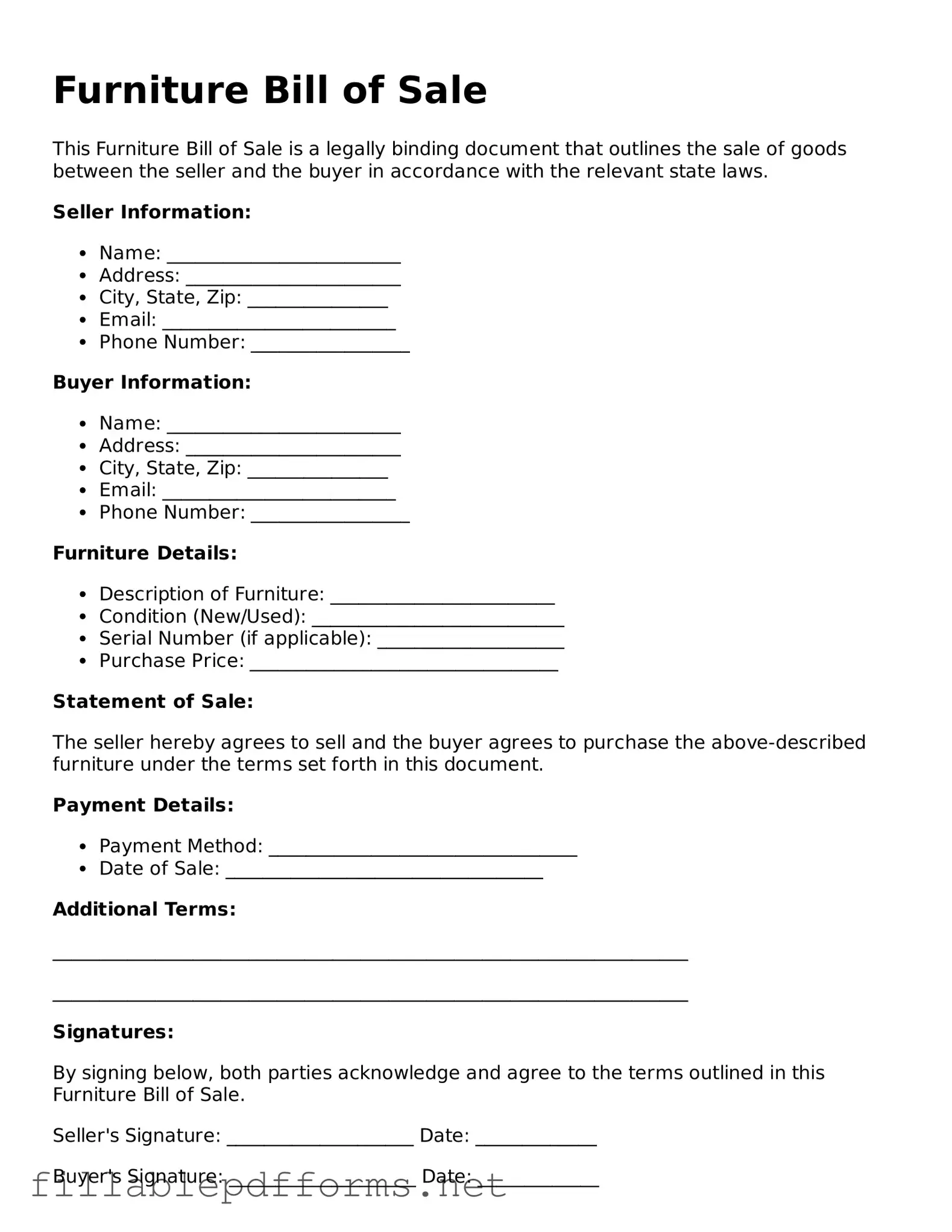Blank Furniture Bill of Sale Template
A Furniture Bill of Sale form is a legal document that serves as a receipt for the sale of furniture between a buyer and a seller. This form outlines essential details such as the description of the furniture, the sale price, and the date of the transaction. By providing a clear record of the sale, it helps protect both parties in case of disputes or misunderstandings in the future.
Launch Editor Here
